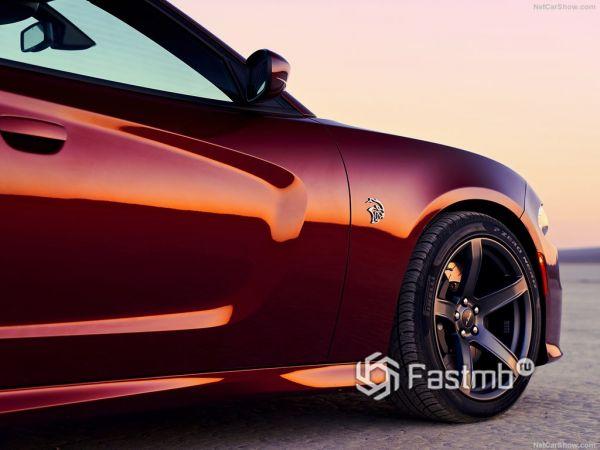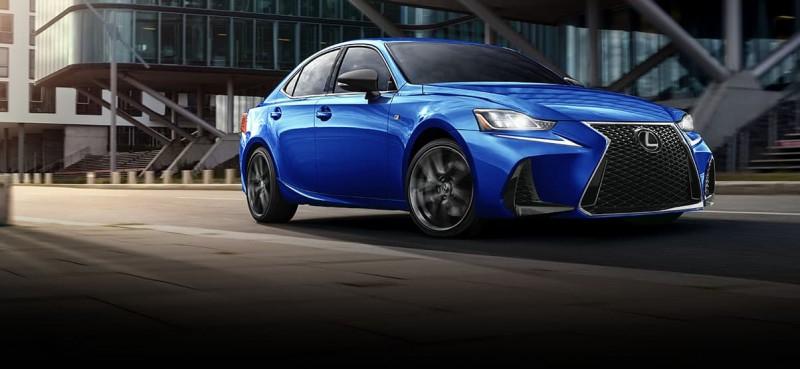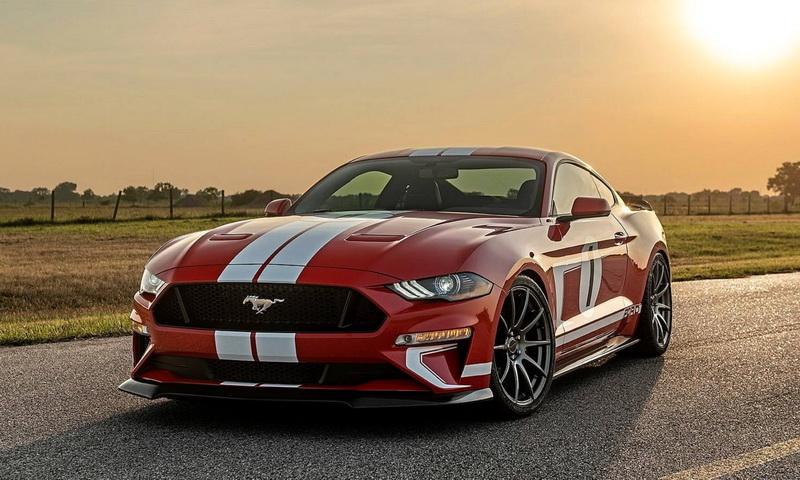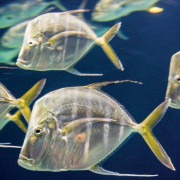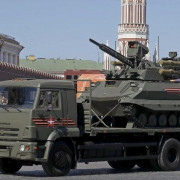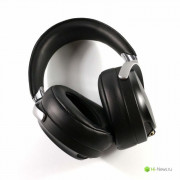Koenigsegg agera rs
Содержание:
- The world’s smallest, most power-dense automotive battery system
- Top-mounted active rear wing
- Light Speed Transmission (LST)
- Koenigsegg Jesko
- Официальные мировые рекорды
- Upgrades (28)
- The Koenigsegg Jesko Absolut
- Start a Discussion Discussions about KOENIGSEGG AGERA RS
- Design and Aerodynamics
- Interior and Equipment
- Interior and Equipment
- ’AIRCORE’ hollow carbonfibre wheels
- TIME TO TAKE ACTION
- Koenigsegg Agera RS
- Nine-speed, multi-clutch transmission – 100% designed and built by Koenigsegg
- Agera R’ 2013
- UPOD – Ultimate Power On Demand
- Технические характеристики
- Carbonfibre chassis
The world’s smallest, most power-dense automotive battery system
At the heart of the Koenigsegg Regera’s game-changing new Direct Drive system is a battery pack akin to Formula 1 grade electrification applied to a road car for the first time.
The Regera’s battery pack has two parallel strings of 192 cells, for a total of 384 cells. The battery is a 4.5kWh unit running on 800volts (V), which makes the Regera the first 800V production car in the world. That massive 800V supply line lets us draw power from the battery at an alarming rate and importantly, we can draw that power for a relatively long period of time.
The Regera produces 670 electric hp, and all that from a battery pack that weighs just 66kg with cooling fluids.
The Regera can draw on its full 670 electric horsepower from very low speeds for a full 10 seconds, much longer than the draw capability of any competitor.
It’s not just the battery’s ability to draw immense power that is impressive, however. The battery can also accept a massive 200kW of recharge, if necessary, with the system constantly striving for a balance between power and efficiency.
The Regera battery pack’s combination of extreme light weight, high output and high discharge/recharge set it apart from anything else in production today and will place the Regera at the pinnacle of the automotive landscape for years to come.
Top-mounted active rear wing
The Koenigsegg One:1 came equipped with the world’s first top-mounted, active rear wing.
The key to providing downforce while maintaining speed is the minimization of drag. The ideal scenario is one where you direct air pressure where it is needed to keep the car on the road (downforce) without slowing the car down (drag).
Wing mounting techniques have evolved to allow variation of the wing angle – what’s known as an ‘active’ rear wing – to provide the appropriate amount of downforce or drag, depending on the situation. ‘Top speed’ mode provides the minimum amount of drag. ‘Handling’ mode applies more downforce. ‘Brake’ mode sets the wing at its highest angle and acts as an air brake. These settings are all automatic, depending on speed and throttle/brake use.
Traditional wings are attached via the underside of the wing and mounted on posts. Top-mounting is important because it’s the underside of the wing that is most critical in creating downforce. Disturbances under the wing, such as mounting posts and hardware, create turbulence that compromise the wing’s effectiveness.
The One:1 rear wing is mounted using two strakes that run down the back of the car. These strakes act as stabilizers at high speed. At the ends of the strakes, the mounting points for the wing reach up and over the front lip of the wing, ensuring no turbulence on the underside.
The result is a rear wing that provides up to 600kg of downforce when required but can also be set to maximum ‘slipperiness’ for top speed or maximum drag for braking.
Light Speed Transmission (LST)
The Koenigsegg Jesko features an all-new 9-speed, multi-clutch transmission – the second transmission to be 100% designed and built in-house at Koenigsegg, following the Direct Drive system designed for the Regera.
The Koenigsegg Light Speed Transmission (LST) represents a scale of evolution not seen since the development of modern dual-clutch technology at the turn of the century.
LST comprises nine forward gears and seven wet, multidisc clutches in a compact, ultra-light package. The LST is capable of upward and downward gear changes between gears at near light speed thanks to the simultaneous opening and closing of clutches that allows for totally seamless acceleration/deceleration.
That LST gear changes can occur in virtually zero time between adjacent gears is impressive.
What takes LST from impressive to evolutionary, however, is that these shift-time benefits apply when changing between ANY forward gears.
UPOD – ULTIMATE POWER ON DEMAND
The key to this functionality is found in both the transmission’s unique design and Koenigsegg’s intelligent ‘UPOD’ technology – Ultimate Power On Demand. UPOD is the brain that instantly selects and engages optimum gearing for maximum acceleration.
While modern dual-clutch transmissions (DCT) enjoy millisecond shift times, they can only pre-select for a fast shift in one direction. DCT’s are designed to predict and pre-select the next gear based on inputs from the driver. If that prediction is wrong – e.g the driver wants to shift from 5th gear to 4th, instead of the presumed and pre-selected 6th gear – the driver will experience G-force losses and a slow shift response.
In addition, DCT’s only work in single-gear intervals. From 7th gear to 6th, to 5th, to 4th, for example. If the driver is in 7th gear and wants 4th for maximum power, the DCT cannot pre-select 4th gear directly. The driver has to pass through 6th and 5th gears, wasting time and power.
The Koenigsegg LST overcomes this via its unique multi-clutch design and UPOD technology, which selects the optimum gear for maximum power with a light speed gear change, regardless of whether that gear is 1, 2 or even 5 gears away.
UPOD uses vehicle speed and engine speed to determine the correct gear for maximum power and directs the LST to engage that gear, no matter its relationship to the current gear. If you are in 7th gear and 4th is the optimal gear for maximum acceleration, UPOD can bypass downshifts to 6th and 5th gear and put the car directly from 7th to 4th – in light speed.
The effect is instant, prolific power that’s always optimised and always available, allowing maximum acceleration for overtaking, corner exits, etc.
Koenigsegg Jesko
Koenigsegg has unveiled an all-new megacar – the Koenigsegg Jesko – at the 2019 Geneva International Motor Show. Jesko inherits the mantle left by the Agera RS as the leading track-focused, road-legal car for those looking for the ultimate in vehicle performance.
- Re-designed 5.0 litre twin-turbo V8 engine producing 1280hp on standard gasoline and 1600hp on E85 biofuel (in some markets)
- Revolutionary new 9-speed Koenigsegg Light Speed Transmission (LST)
- Advanced aerodynamics offering over 1000kg of downforce
- Active rear-wheel steering
- Re-designed carbon fibre chassis with more legroom, headroom and greater visibility
Jesko is named for Jesko von Koenigsegg, the father of company Founder and CEO, Christian von Koenigsegg.
Официальные мировые рекорды
2 сентября 2011 года гиперкар Koenigsegg Agera R в стандартной комплектации на 1115 л. с. установил 6 официальных мировых рекордов на тестовом полигоне Koenigsegg. В процессе тестирования были проведены заезды двух типов:
- 1-й тип 0-300 км/ч
- 2-й тип 0-322 км/ч
Также была испытана тормозная система автомобиля, что дало возможность установить ещё четыре рекорда. Во время тестов разгона-торможения гиперкара, автомобиль показал следующие результаты:
Время разгонов:
- 0-300 км/ч — 14,53 сек.
- 0-322 км/ч — 17,68 сек.
Время торможения:
- 300-0 км/ч — 6,66 сек.
- 322-0 км/ч — 7,28 сек.
Время разгона-торможения:
- 0-300-0 км/ч — 21,19 сек.
- 0-322-0 км/ч — 24,96 сек.
Upgrades (28)
| Upgrade | Duration | R | G | |
|---|---|---|---|---|
| 1 | Engine: High Flow Carbon Fibre Airbox | 12 Hours | 132,800 | 65 |
| 2 | Engine: Advanced Intake Manifold | — | — | 95 |
| 3 | Engine: Increase Engine Bore | 1 Day | 298,900 | 145 |
| 4 | Engine: Advanced Cam-Shaft | — | — | 220 |
| 5 | Engine: Advanced Cylinder Heads | 2 Days | 672,400 | 335 |
| 1 | Drivetrain: Lightweight Gearbox Housing | 12 Hours | 123,600 | 60 |
| 2 | Drivetrain: Ultra-Lightweight Driveshaft | — | — | 90 |
| 3 | Drivetrain: Ultra-Lightweight Differential | 1 Day | 278,100 | 135 |
| 4 | Drivetrain: Ultra-Lightweight Flywheel | — | — | 205 |
| 1 | Body: High Performance Body Refinements | 12 Hours | 98,200 | 48 |
| 2 | Body: Advanced Aerodynamic Detailing | — | — | 70 |
| 3 | Body: Advanced Weight Reduction | 1 Day | 220,900 | 110 |
| 4 | Body: Advanced Body Refinement | — | — | 165 |
| 5 | Body: Competition Aerodynamic Detailing | 2 Days | 497,000 | 245 |
| 1 | Suspension: Performance Suspension Tuning | 12 Hours | 113,300 | 55 |
| 2 | Suspension: Fully Adjustable Sports Shocks | — | — | 80 |
| 3 | Suspension: Advanced Suspension Tuning | 1 Day | 254,900 | 125 |
| 4 | Suspension: Competition Sway Bars | — | — | 190 |
| 1 | Exhaust: Custom Exhaust Headers | 12 Hours | 112,000 | 55 |
| 2 | Exhaust: Custom Titanium Performance Exhaust | — | — | 80 |
| 3 | Exhaust: Competition Turbo-back Exhaust | 1 Day | 252,100 | 125 |
| 1 | Brakes: Uprated Performance Vented Brake Discs | 12 Hours | 86,600 | 42 |
| 2 | Brakes: Advanced Brake Pads | — | — | 60 |
| 3 | Brakes: Uprated Competition Calipers | 1 Day | 194,900 | 95 |
| 1 | Tires & Wheels: High-Grip Performance Compound | 12 Hours | 104,000 | 50 |
| 2 | Tires & Wheels: Specialized Camber & Toe Adjustments | — | — | 75 |
| 3 | Tires & Wheels: Competition Compound | 1 Day | 233,900 | 115 |
| 4 | Tires & Wheels: Competition Camber & Toe Adjustments | — | — | 175 |
| Colour keys |
|---|
For upgrades including PR values, please see the project page , please be aware that PR values can vary depending on the upgrade order.
The Koenigsegg Jesko Absolut
The Koenigsegg Jesko Absolut has been unveiled. It is the fastest Koenigsegg ever made and the company will never endeavor to make a faster series-production road car – ever. Customers will be able to choose between the Jesko Absolut and the more track-oriented Jesko version that was presented a year ago.
Every surface element on the Jesko Absolut has been purposefully constructed to reduce drag or surrounding turbulence around the car while increasing high-speed stability. Although just as powerful, the Jesko Absolut is a more seamless and stealthier interpretation of the Jesko, its track-focused sibling.
Start a Discussion Discussions about KOENIGSEGG AGERA RS
-
7 messages
-
Fdalbor
The exclusive series for the One:1 has a nice 10 lap Spa race that pays a nice 15,000 fame. Its the last race in the series but its worth … 2020-01-18T21:48:09Z
-
DecadeHansen
Agera RS all the way. The One:1 may have a 1:1 power-to-weight ratio, but the Agera RS is faster because it’s lighter (the One:1 weighs 1… 2020-01-19T14:26:01Z
-
-
Agera RS fully upgraded top speed?
6 messages
-
Fdalbor
Yes, but can it really get that 305mph on any of the tracks in the game. I doubt it. The One:1 shows 290mph but I have never come anywhere cl… 2019-12-13T02:36:55Z
-
Pidro2
Fdalbor wrote:Yes, but can it really get that 305mph on any of the tracks in the game. I doubt it. The One:1 shows 290mph but I have never c… 2019-12-13T05:08:09Z
-
See more discussions >
Design and Aerodynamics
The all-new Koenigsegg Jesko is the successor to the Agera line in the Koenigsegg portfolio and has inherited not only a place in the lineup, but a rich design heritage, as well.
Joachim Nordwall, Design Director:
Even though the Agera turned out to be a road monster, there was a level of simplicity and humility to its design, something that reflects the character of both Koenigsegg as a company, and our founder, Christian von Koenigsegg. This design ethos is also present in Jesko. It’s both humble and assertive, but not angry.
The shape is instantly familiar and there are a number of design cues that tip their hat in respect to the outgoing Agera. The dip between the rear lamps, for example, which is present, but done in a more modern way. The wraparound windscreen is there, too, but now has more of a fighter jet stance thanks to a taller roof line. The headlamps were given a more dynamic approach, morphing closer to the Regera shape but retaining an identity of their own.
Cues from the Regera do not stop there. Jesko has a similar design at the rear with an open design for increased airflow and an exhaust reminiscent of the inverter heat extraction outlet on the Regera. The air ducts at the front wheel are also similar.
Jesko looks smaller than the Agera and Regera, thanks to it having more shape around the wheels. It’s actually 30mm taller and 40mm longer than the Agera, which allows for better ingress and egress, a more spacious cabin and better visibility.
It also looks more agile. We adopted a ‘shrinkwrap’ approach to skinning this car, using crisp angles and lines to eliminate empty spaces and make the design as effective as possible.
I’m proud of what we’ve achieved with this car. It’s new, but it’s also classic Koenigsegg.
AERODYNAMICS
The Koenigsegg Jesko features aerodynamics designed with one goal in mind – blistering on-track performance.
As Jesko is an all-new vehicle, Koenigsegg went back to the drawing board and designed an all-new rear wing, new front splitter and new rear diffuser. These form the core of an active aerodynamics and airflow package that maximises downforce while minimising drag.
Interior and Equipment
The new Koenigsegg Jesko is unapologetically designed to be the most capable track-oriented car ever made for the road. It is engineered for prodigious speed – both straight-line and lateral – with total driver control.
That doesn’t mean one has to be uncomfortable, however.
Jesko is equipped with a full suite of creature comforts and a level of convenience more befitting a grand tourer than your typical track weapon.
The simple push of a button on the elegant Koenigsegg remote control operates Autoskin, the pioneering body opening system first shown on the Regera. Minituarised hydraulics that were initially designed to operate aerodynamic systems now engage to open the car’s doors and hoods, allowing true touchless entry.
Koenigsegg’s signature dihedral synchro-helix door hinge has also been re-designed. It now opens slightly outwards and upwards compared to the original. This provides even more room for ingress and egress, and reduces the danger of scraping high curbs. The Autoskin system includes sensors to protect both automated doors from opening where an obstruction is detected.
The interior is swathed in luxury materials – leather, alcantara, carbon fibre, aluminium and glass.
Jesko’s electrically operated seats can be finished in the customer’s choice of leather or alcantara, with an almost endless variety of colour and contrast options. The sport bucket seats are built around a carbon fibre seat shell, resulting in a seat that is both extremely light and comfortable. Controls for seat position and heating are available via the SmartCenter touchscreen. Drivers can find the perfect driving position by matching their seat position with the fully adjustable steering column and pedal box.
SMARTWHEEL ADDED TO KOENIGSEGG’S SMART ARCHITECTURE
Koenigsegg has developed new driver controls using touchscreen technology built into both the new SmartCenter and SmartWheel.
SmartWheel sees two small touchscreens embedded into Jesko’s steering wheel, making a suite of features accessible with just a touch or a swipe. The screens’ default configurations enable functions such as audio control, phone control, ride height control and cruise control. The screens are context sensitive, however, and other options may show or be configured into the system. SmartWheel’s screens feature haptic feedback, allowing ease of use without the need for constant visual connection.
Interior and Equipment
The Jesko Absolut is equipped with a full suite of creature comforts and a level of convenience more befitting a grand tourer than your typical track weapon.
The simple push of a button on the elegant Koenigsegg remote control operates Autoskin, the pioneering body opening system first shown on the Regera. Miniaturised hydraulics that were initially designed to operate aerodynamic systems now engage to open the car’s doors and hoods, allowing true touchless entry.
Koenigsegg’s signature dihedral synchro-helix door hinge has also been re-designed. It now opens slightly outwards and upwards compared to the original. This provides even more room for ingress and egress, and reduces the danger of scraping high curbs. The Autoskin system includes sensors to protect both automated doors from opening where an obstruction is detected.
The interior is swathed in luxury materials – leather, alcantara, carbon fibre, aluminium and glass.
Jesko’s electrically operated seats can be finished in the customer’s choice of leather or alcantara, with an almost endless variety of colour and contrast options. The sport bucket seats are built around a carbon fibre seat shell, resulting in a seat that is both extremely light and comfortable. Controls for seat position and heating are available via the SmartCenter touchscreen. Drivers can find the perfect driving position by matching their seat position with the fully adjustable steering column and pedal box.
SMARTWHEEL ADDED TO KOENIGSEGG’S SMART ARCHITECTURE
Koenigsegg has developed new driver controls using touchscreen technology built into both the new SmartCenter and SmartWheel.
SmartWheel sees two small touchscreens embedded into Jesko’s steering wheel, making a suite of features accessible with just a touch or a swipe. The screens’ default configurations enable functions such as audio control, phone control, ride height control and cruise control. The screens are context sensitive, however, and other options may show or be configured into the system. SmartWheel’s screens feature haptic feedback, allowing ease of use without the need for constant visual connection.
’AIRCORE’ hollow carbonfibre wheels
Koenigsegg quite literally reinvented the wheel in 2012 when it introduced the patented Aircore technology, used to craft a new one-piece, hollow-core carbonfibre wheel.
Koenigsegg’s previous alloy wheels were already extremely light, yet the use of carbonfibre allowed for a 20kg saving in un-sprung mass with no compromise whatsoever to the structural rigidity of the wheel. Savings in un-sprung mass are desirable in a performance car because this is weight that can’t be controlled by the suspension system.
Lighter wheels mean quicker acceleration as there is less weight to move from rest. They also mean less rotational mass, which results in more agile changes in direction (cornering) and more efficient braking.
Initially released as a five spoke wheel only, a new three-spoke carbonfibre wheel has been designed for use on the Koenigsegg Regera.
The wheels are made in-house at the Koenigsegg factory in Ängelholm. The five-spoke wheel used on the Agera RS uses 650 individual pieces of carbonfibre, laid up in such a way so as to be both as light and as strong as possible. The three-spoke wheel of the Regera uses 750 pieces.
TIME TO TAKE ACTION
Agera means “to take action” in Swedish. It is also short for the ancient Greek word Ageratos which means “ageless”. These are both suitable descriptors for this incredible and beautiful machine.
The CCX and CCXR were difficult cars to follow as their performance and functionality remains very competitive. Still, there is always room for change and improvement.
So Koenigsegg came up with a new interior, featuring the now famous ‘ghost’ lighting system, where all interior symbols are created with laser etched, virtually invisible nano-holes through the aluminum panels and buttons.
Furthermore, the Agera featured a unique 7 speed transmission with a E-diff and wet clutch functionality developed by Koenigsegg, a transmission that truly enhanced performance and handling.
The Agera was the first model to feature the Koenigsegg developed VGR wheels. They are real air turbines, increasing the downforce of the car by measurable amounts and improving brake cooling. All four wheels are individual so that turbine blades always face the correct direction for extraction. Given that the offset and width is different front to rear, all four wheels have their own unique design. The VGR wheels are forged and then fully machined to the final shape. All excess material is removed during the forging and machining process, thus minimizing weight whilst displaying outstanding levels of stiffness.
The CCX and CCXR both had supercharged engines, which at the time was the superior solution. However, turbo technology had come a long way and the downside of turbo lag was starting to become almost nonexistent, if engineered properly. The problem with turbo engines, high power and emission control was that the catalytic converters caused a lot of back pressure at high power levels. These back pressures were elevated through the turbo and into the exhaust ports of the engine, thereby causing what is called hot EGR. Hot EGR is a source for detonation knocking. To alleviate this problem, Christian came up with an ingenious solution by placing the pre-cat behind the waste gate instead of the turbo, thereby reducing the back pressure with a factor of 3. This simple solution gave 300 hp extra power and was a worthy successor of the Rocket cat invented and developed by Christian almost 10 years earlier. It also meant that the Agera could deliver torque, power and response to match much larger engines at a fraction of their weight, making it extremely competitive.
Koenigsegg Agera RS
Chassis #7118 is finished in vibrant yellow with clear carbon striping and bright red accents on the front splitter, winglets, side skirts and rear diffusor. The interior combines black leather with contrasting yellow piping and stitching.
Standard features on the Agera RS include:
Safety: dual airbags, adjustable sculpted aluminum pedals, adjustable steering column, carbon ceramic brakes with Sport ABS, Koenigsegg Electronic Stability Control (KES) with three mode settings, front/rear hydraulic lifting system, tire monitoring system
Convenience: power windows, power steering, satellite navigation, LifePo4 battery, audio system with USB connectivity, Bluetooth telephone control, climate control, alarm
Experience: detachable and stowable hardtop with lightweight roof, leather interior with Agera style stitching, carbon fiber sport seats with memory foam, digital warning and information system with inbuilt G sensor, Koenigsegg shield key fob, roof storage bag, car cover and Koenigsegg car charger
Power and Control
The Agera RS features Koenigsegg’s potent 5.0 litre 32-valve V8 engine with multipoint fuel injection controlled by engine management technology developed in-house at Koenigsegg.
Boost is provided by twin ceramic ball bearing turbochargers, a patented backpressure reduction system and variable turbo geometry producing 1.3 bar of boost pressure. The engine produces a staggering 1160hp at 7800rpm (232hp per liter of displacement) and 1280Nm of torque on 95 RON fuel.
Power is delivered via a 7-speed sequential transmission built to Koenigsegg specifications by CIMA, the world’s preeminent gearbox developer and a supplier to Formula 1 teams since 1957. The transmission and differential are both controlled by software developed in-house by Koenigsegg.
The Agera RS’s suspension starts with our super-stiff carbon fiber monocoque with integrated fuel tank. Weighing in at just 72kg, the monocoque has an industry-leading 65,000Nm per degree of torsional rigidity. This stiffness allows Koenigsegg’s suspension the independence it needs to keep the car’s extraordinary power to the ground.
The suspension system includes double wishbones front and rear, with electronically adjustable gas-hydraulic dampers made for Koenigsegg by Ohlins of Sweden. Together with Koenigsegg’s patented Triplex suspension, this allows the Agera RS to pull up to 1.75 lateral G.
Power is nothing without control.
Agera RS Success
The Agera RS is an edition of 25 cars that premiered at the 2015 Geneva Motor Show. The 25th and final car of the series was sold in January 2016, just 10 month after release, making the Agera RS the fastest selling model in Koenigsegg history.
The final Agera RS is scheduled for completion and delivery in 2017.
——
Press releases and images available at Koenigsegg Press.
Nine-speed, multi-clutch transmission – 100% designed and built by Koenigsegg
The Koenigsegg Light Speed Transmission (LST) represents a scale of evolution not seen since the development of modern dual-clutch technology (DCT) at the turn of the century.
LST is Koenigsegg’s latest gearbox innovation comprising nine forward gears and several wet, multi-disc clutches in a compact, ultra-light package. It is capable of gear changes between any gear, at near light speed. This is thanks to the simultaneous opening and closing of clutches, which make the driving experience so seamless that it feels like the driver and car are symbiotically connected.
Equally revolutionary is the size and weight of the LST. Modern high-performance DCTs can easily weigh well in excess of 120 kg, yet the nine-speed Koenigsegg LST transmission weighs just 90 kg, including fluids.
The package is also half the size of the previous Koenigsegg transmissions. This small size keeps the weight closer to the center of the car, improving weight distribution and handling.
Agera R’ 2013
В 2012 году компания Koenigsegg представила обновленную версию Koenigsegg Agera R. Новый автомобиль получил приставку 2013 как обозначение года выпуска модели в серийное производство. В отличие от первой версии Agera R, обновлённая модель имеет восемь улучшений:
- Наличие новых лёгких колёсных дисков из углеродного волокна сделанных инженерами компании по собственной разработке Aircore. Внутри диски полые и единственная металлическая часть это клапан. Это уменьшило на 20 кг неподрессорные массы.
- У обеих моделей Agera и Agera R установленные новые гильзы цилиндров покрытые нанопокрытием, что позволяет уменьшить трение и как следствие расход топлива.
- Разработана собственная система управления топливом, обеспечивающая дополнительную функциональность и соответствующая протоколу OBD II (для диагностики автомобилей).
- Было проведено увеличение мощности двигателя с 1115 до 1140 л. с. при работе на биотопливе Е85, и повышены обороты двигателя с 6900 до 7100 об./мин. Крутящий момент в 1000 Н·м стал достигаться в пределах 2700-7300 об./мин. Максимальный крутящий момент составляет 1200 Н·м при 4100 об./мин.
- Совместно с Ohlins Racing была разработана уникальная подвеска Triplex, которая с 2013 года устанавливается на базовую версию Agera R.
- КЭС (электронная система стабилизации) стала стандартом для всех моделей Koenigsegg.
- Для версии Agera R была разработана облегченная выхлопная система и увеличенная производительность заднего диффузора.
- Изменённые боковые передние крылья нового Agera R обеспечивают дополнительные 20 кг прижимной силы на скорости 250 км/ч, и значительно снижают сопротивление.
Koenigsegg Agera R поставляется на специальных шинах Michelin. В качестве заводской заливки автомобилей Koenigsegg используются моторные масла Valvoline.
UPOD – Ultimate Power On Demand
Standard modern dual-clutch transmissions (DCT) are designed to predict and pre-select the next gear based on inputs from the driver. However, if that prediction is wrong, the driver will experience G-force losses and slow shift response. In addition, DCTs only work in single-gear intervals.
The LST, on the other hand, overcomes the normal DCT-problems via its unique multi-clutch design and “UPOD” technology – Ultimate Power On Demand. UPOD is the brain that instantly selects and engages optimum gearing for maximum acceleration. It selects the ideal gear for maximum power with a light-speed gear change, regardless of how far away the gear is. UPOD uses vehicle and engine speed to determine the correct gear for maximum power and directs the LST to engage that gear.
Технические характеристики
Под капотом Agera R находится 5,0-литровый V8 с двойным турбонаддувом, адаптированный для использования биотоплива. Автомобиль способен выдерживать боковые перегрузки в 1,6 g. Вес автомобиля сведен к минимуму благодаря углеволоконному кузову и топливному баку из алюминиевых сот. Сухая масса составляет 1330 кг с распределением веса 45/55.
Переключение передач осуществляет 7-ступенчатый автомат с электронной блокировкой дифференциала. Максимальная скорость автомобиля ограничена в 375 км/ч, так как установленные шины Supersport фирмы Michelin способны выдерживать скорости только до 420 км/ч.
Однако инженер-разработчик Кристиан фон Кёнигсегг утверждает, что, при наличии более выносливых шин и отсутствии встречного ветра, на прямой трассе Agera R способна разогнаться до 440 км/ч.
Разгон:
- до 200 км/ч: 7,8 сек
- до 300 км/ч: 14,53 сек
- 0-200-0 км/ч: 12,7 сек.
Carbonfibre chassis
At the core of every Koenigsegg car is its carbonfibre tub chassis.
The Koenigsegg chassis is a case of do-it-once-do-it-properly, with key elements of the chassis we use today still true to Christian von Koenigsegg’s original design.
The Koenigsegg chassis a pre-impregnated carbon-fiber construction with an aluminium honeycomb core structure (the same as used in Formula 1) for increased crash protection. The aluminium fuel tank is integrated into the tub chassis, inside the hollow box sections across the rear and along the right and left sills. This gives the fuel tank maximum protection and allows for the best possible weight distribution in combination with the most optimal packaging.
The Koenigsegg carbonfibre tub chassis has 65,000 Nm per degree of torsional rigidity, more than any other vehicle in the world, current or past, which is astonishing as the car also is a roadster, with a detachable and stowable roof panel. What does such a measurement mean in the real world?
In simple terms, it means that the car is very, very resistant to twisting or flexing when under pressure (e.g. at 2g’s in a corner).
